Dave’s Diegesis: Zetetic Shtick
 But, Mousie, thou art no thy lane,
But, Mousie, thou art no thy lane,
In proving foresight may be vain;
The best-laid schemes o’ mice an’ men
Gang aft agley,
An’lea’e us nought but grief an’ pain
For promis’d joy!
Robert Burns
Welcome back, diegesians! I apologize for the paucity of posts lately, but I can assure you the reason is worthy. My NESN colleagues (yes, you read that correctly!) Don Orsillo and Jerry Remy spilled the beans already, but I am returning to NESN as an analyst.
I’ve always wondered about that saying, “spill the beans.” The folk etymology of the cliche detailed at The Maven at Words@Random is, as all fictive origin tales are, quaint. Secret societies in ancient Greece supposedly voted on potential initiates by placing beans into a jar; black for “no” and white for “yes.” Said beans were surreptitiously placed into the jar to keep the vote anonymous. Inevitably, as Greeks were inveterate drunkards, especially members of these conclaves, someone knocked over a jar, revealing the secret and thus spilling the beans.
And you thought the voting for the presidential voting for the past two elections were irregular.
Ancient Greek groups are the origin of many a peculiar and rarely used word. “Zetetic” is an elaborate way to say “inquisitive ” or “investigative.” This is exactly the posture I will bring to my analysis of Red Sox baseball this weekend: acute analysis and unrelenting rigor.
As a compelling side note, there is a Zetetics Laboratory at the University of Nice Sophia Antipolis in France. They offer a cash prize to anyone that can offer proof of the paranormal, as the James Randi Educational Foundation does.
I’m eager to enjoy the epicurean delights of the ballpark again. Sadly, the common usage of “epicure,” which refers to a person who delights in sensual delectation, particularly food and drink, has drifted far from what the sage Epicurus instructed. Epicureanism stressed the neutrality of higher powers such as gods and theorized matter was comprised of atoms; the later was brought over from the school of Democritus. Epicurus’s school, The Garden, was diverse, including both slaves and women. The meaning of “epicure” distorted throughout the ages because the philosopher’s tenets were to achieve mental ease (ataraxia) and freedom from bodily pain (aponia). Sensual desires were not to be sublimated but encouraged to the extent that they are satisfied, although not overly so.
But this leniency towards gratification was misinterpreted and extrapolated to profligacy, quite contrary to Epicurus’s original intent. During my stint at NESN, however, I hope to abide by the germinal beliefs of the Epicureans and hopefully deliver analysis that is simultaneously ataraxic and aponic.
Every Friday, Dave McCarty will join us to discuss a topic of interest to him and probably no one else but the author of this site.









 The only reason for time is so that everything doesn’t happen at once.
The only reason for time is so that everything doesn’t happen at once.
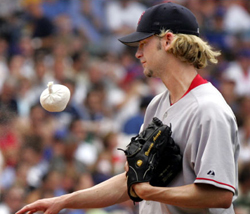 Like so many of the implements of baseball, rosin has its origins in the pine tree. In fact, rosin does carry the distinctive tang of conifers. Just as maple syrup is tapped, resin from pine trees is collected. Resins from different types of trees are collected, and each manufacturer has its own secret combinations.
Like so many of the implements of baseball, rosin has its origins in the pine tree. In fact, rosin does carry the distinctive tang of conifers. Just as maple syrup is tapped, resin from pine trees is collected. Resins from different types of trees are collected, and each manufacturer has its own secret combinations. To make myself useful around the Red Sox clubhouse, in case I get a call that they need help or whatnot, I’ve been teaching myself some new skills that may come in handy. One thing I’ve been mastering is the art of rubbing baseballs. But before one acquires the expertise necessary to prepare a ball for play, one must understand who Lena Blackburne is and what makes him famous.
To make myself useful around the Red Sox clubhouse, in case I get a call that they need help or whatnot, I’ve been teaching myself some new skills that may come in handy. One thing I’ve been mastering is the art of rubbing baseballs. But before one acquires the expertise necessary to prepare a ball for play, one must understand who Lena Blackburne is and what makes him famous.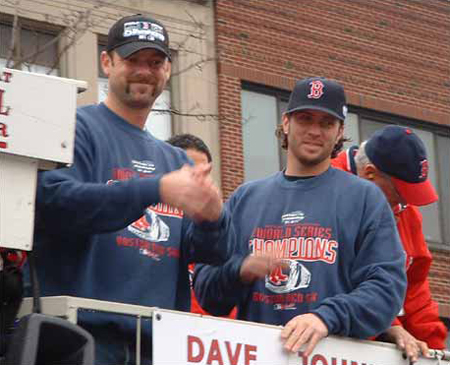

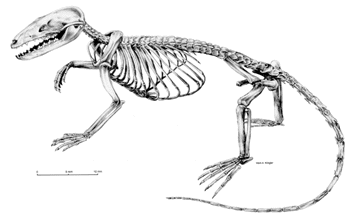 A
A  T. carnifex, who is affectionately called “leo,” became extinct 46-50,000 years ago, prowled southern Australia for
T. carnifex, who is affectionately called “leo,” became extinct 46-50,000 years ago, prowled southern Australia for 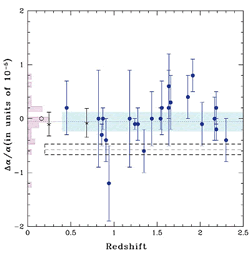 The discovery of quasars in the 1960s enabled astronomical observations to measure α more precisely. Light emitted by a quasar travels immense distances, and along their path passes through gas that absorbs the light at frequencies. This absorption is dependent upon the electromagnetic force between the nucleus and the electrons, which also derives the value of the fine-structure constant.
The discovery of quasars in the 1960s enabled astronomical observations to measure α more precisely. Light emitted by a quasar travels immense distances, and along their path passes through gas that absorbs the light at frequencies. This absorption is dependent upon the electromagnetic force between the nucleus and the electrons, which also derives the value of the fine-structure constant.  mj-t (and even I don’t know how to pronounce that last one). Many cultures invented gum throughout history, and this parallel evolution proves that you can’t keep a good invention down.
mj-t (and even I don’t know how to pronounce that last one). Many cultures invented gum throughout history, and this parallel evolution proves that you can’t keep a good invention down.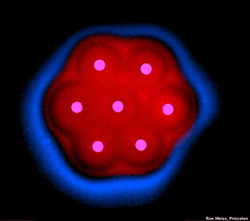 His team was able to manipulate E. coli colony to glow with either red or green light in response to a signal sent by a different set of E. coli. Although we’re probably decades away from full control of cells through artificial mechanisms, one of the first applications of this technique may enable us to detect bioterrorist compounds with greater efficacy. Unlike current methods of detection, bacteria could be programmed to “have an exquisite capability to sense molecules in the environment,” Weiss said. “The bull’s-eye could tell you: This is where the anthrax is.”
His team was able to manipulate E. coli colony to glow with either red or green light in response to a signal sent by a different set of E. coli. Although we’re probably decades away from full control of cells through artificial mechanisms, one of the first applications of this technique may enable us to detect bioterrorist compounds with greater efficacy. Unlike current methods of detection, bacteria could be programmed to “have an exquisite capability to sense molecules in the environment,” Weiss said. “The bull’s-eye could tell you: This is where the anthrax is.”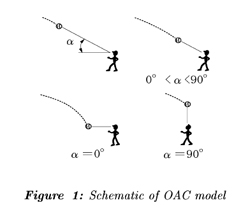 Fielders using the OAC model supposedly have a two-step approach. They first align themselves horizontally with the path of the ball, then they run towards to ball at a speed that makes it appear as if it were rising at a constant rate. For this approach to be successful, fielders need to adjust to the correct speed to cancel the ball’s acceleration. Run too slowly and the ball will appear to slow down and land in front of the fielder; too quickly, and the ball seemingly speeds up and land behind the fielder. The essential assumption behind this method is that people are adept at discerning acceleration, which is actually not the case. In practice, the most difficult ball to field is one hit directly at a fielder, while the OAC theory presumes that it would require more effort to run laterally to the flight of the ball. I’ll be the first to tell you, and I’m not alone among outfielders, that it is actually easier to track down a ball from the side.
Fielders using the OAC model supposedly have a two-step approach. They first align themselves horizontally with the path of the ball, then they run towards to ball at a speed that makes it appear as if it were rising at a constant rate. For this approach to be successful, fielders need to adjust to the correct speed to cancel the ball’s acceleration. Run too slowly and the ball will appear to slow down and land in front of the fielder; too quickly, and the ball seemingly speeds up and land behind the fielder. The essential assumption behind this method is that people are adept at discerning acceleration, which is actually not the case. In practice, the most difficult ball to field is one hit directly at a fielder, while the OAC theory presumes that it would require more effort to run laterally to the flight of the ball. I’ll be the first to tell you, and I’m not alone among outfielders, that it is actually easier to track down a ball from the side.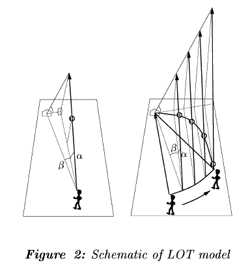 This brings us to the LOT framework. LOT assumes that a fielder uses the differential between straight and curved trajectories rather than changes in speed. The LOT theory is based on evidence that people are better at determining minute changes in optical curvature. When I’m out in the field, the ball looks like it moves in a straight line and at a constant speed relative to the background scenery. To counteract this, I would run on a curved path to accommodate the curvature of the ball’s trajectory.
This brings us to the LOT framework. LOT assumes that a fielder uses the differential between straight and curved trajectories rather than changes in speed. The LOT theory is based on evidence that people are better at determining minute changes in optical curvature. When I’m out in the field, the ball looks like it moves in a straight line and at a constant speed relative to the background scenery. To counteract this, I would run on a curved path to accommodate the curvature of the ball’s trajectory.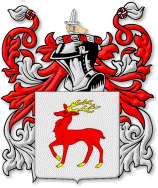 Forgive me if I’m not entirely coherent. I’m a bit hungover from my St. Patrick’s Day festivities. I broke out the old McCarty family crest (argent with a red stag) and imbibed a few frosty ones to honor St. Patrick. The man that became the patron saint of Ireland was actually born in Wales with the name Maewyn Succat around 385 CE. Suffering Succat-ash! Heh, heh. Although born into a pagan culture, a vision sent him to France, where he became a priest.
Forgive me if I’m not entirely coherent. I’m a bit hungover from my St. Patrick’s Day festivities. I broke out the old McCarty family crest (argent with a red stag) and imbibed a few frosty ones to honor St. Patrick. The man that became the patron saint of Ireland was actually born in Wales with the name Maewyn Succat around 385 CE. Suffering Succat-ash! Heh, heh. Although born into a pagan culture, a vision sent him to France, where he became a priest.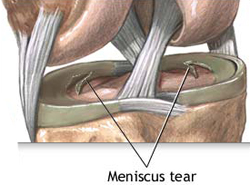 You may have heard that my teammate
You may have heard that my teammate 

